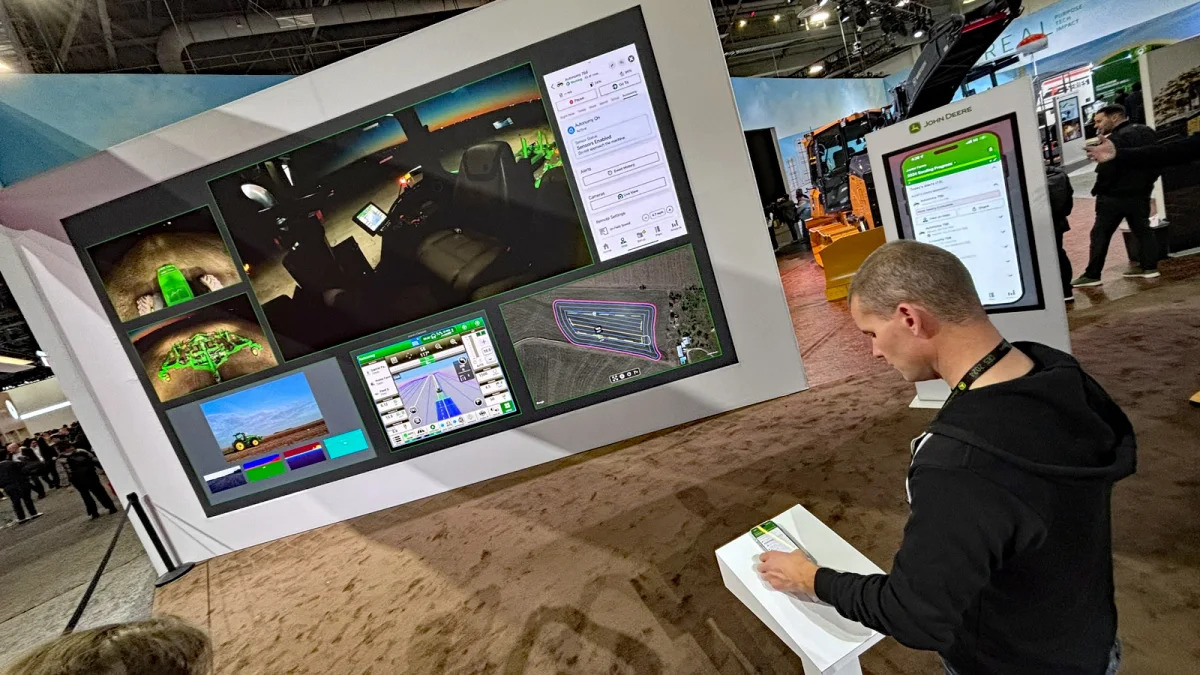LAS VEGAS — And now something from our sister publication Agroblog ...
Tilling a field takes a long time, and by farming standards, isn't the most involved task. Plus, as tilling generally takes place at the same time as harvesting, the amount of skilled man power required is basically doubled during that time of the year. Being able to turn over tilling to an autonomously operated tractor could therefore be a big-time time and money saver for farmers.
Here at CES 2024, John Deere is showing that possibility is already reality. We got a chance to try out John Deere's autonomous tractor tech by tilling a field 1,300 miles away in Austin, Texas. The technology is currently in beta testing with actual owners/farmers throughout the country.
Using an app, the farmer can choose which pre-mapped field the tractor will be tilling, the size of the implement being used, the speeds at which the tractor should travel in both a straight line and when turning, as well as the tilling depth. We were allowed to simply press the Pause/Resume button, but even that was pretty cool, as we could watch on the adjacent video screens the tractor indeed coming to a stop and starting back up again. We could also follow its progress on a map, and keep an eye on the implement doing its tilling thing.
Initially, the autonomous tech will only be able to till, which is the simplest of tasks. John Deere says that by 2030, it plans to expand the system to provide fully autonomous corn and soybean production, including tilling, planting and harvesting. The company says that tilling capability will be made fully available within a couple of years once beta testing is complete. And what's being done during that beta testing? Basically, John Deere is collecting as much data as possible to eliminate as many false-positive automatic stops as it can. You see, the tractor will come to a stop if it detects an obstacle such as a rock, animal, person, whatever. When that happens, the system alerts a local monitoring service that determines if the obstacle is legit. If that service determines that it is, the farmer is alerted. The app then proposes a way around and the farmer either agrees or enters another course of action. The less the farmer is alerted, the more productive they can be, the more valuable an autonomous tractor or tractors can be. Also, the less the local service is alerted, the more autonomous the tractor actually is.
The John Deere autonomous system utilizes six pairs of cameras, arranged in stereo; three at the front and three at the rear. The cameras, plus other hardware, can be retrofitted to John Deere tractors from 2020 onward and, eventually, be added at the factory. Pricing has not been announced, but John Deere said that customers who've found out the price said it was a lot less than they feared. Take that as you will.
While autonomous driving technology for cars and the street remains a long ways away, using it in a big, open field is a totally different thing.






Sign in to post
Please sign in to leave a comment.
Continue